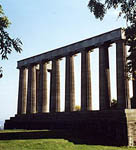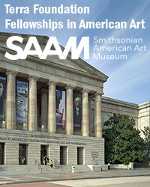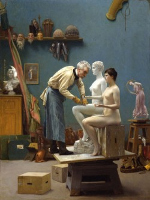X
Please wait for the PDF.
The browser will either open the file, download it, or display a dialog.
The browser will either open the file, download it, or display a dialog.
In the 1820s, Scottish architects Charles Robert Cockerell and William Playfair designed a national monument to memorialize those who had died in the Napoleonic Wars, modelling it after the Parthenon at Athens. Ambitious as it was, the project was never completed and came to stand as "proof of Scotland's pride and poverty." Through examining little-studied letters and documents at the National Library of Scotland, the author describes the struggle to erect this monument and considers the motivations behind emulating such a towering cultural achievement.
Women artists often undergo a cycle of repeated rediscoveries and are only rarely firmly established in art historical memory. In a case study of Austrian Impressionist Tina Blau, this essay traces the moments of silencing and erasure that occur in the writing of her life, suggesting how biography can play a significant role in maintaining historical memory for women artists.
Delécluze's famous biography of Jacques-Louis David, Louis David, son école et son temps: Souvenirs (1855), depicts David as an artist whose career was thwarted under the ancien régime due to the official promotion of history painting as the genre most suitable to display the superiority of French art. In Delécluze's view, the Revolution gave David a chance to create paintings that belonged in a category of their own.
Albert Bierstadt chose a popular tourist site in the White Mountains of New Hampshire as the subject for his largest composition of an eastern landscape, The Emerald Pool of 1870. The author examines how guidebooks, stereographs, recently discovered and attributed sketches, as well as a thriving tourist industry, all informed Bierstadt's monumental painting.










